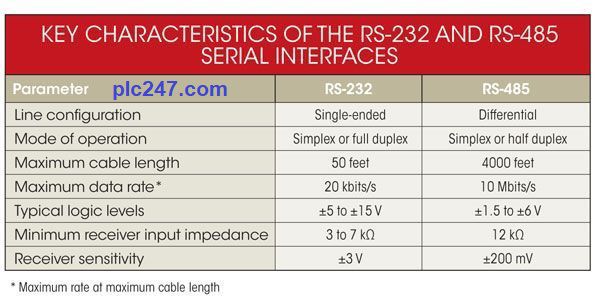In the previous articles, plc247.com introduced you to the RS232 / RS485 communication standard. Today, we continue to discuss and consider the difference between the RS232 / RS485 standards!
As you know, RS232 has standard definition of mechanical interface (jack), in PC computers, there is a standard RS-232 communication port, or COM port. As for RS485, we often see it transmitted on two wires, and the distance is much farther than RS232. So, what is the basic difference between these two standards?
The figure below will give us a basic view of the physical differences such as: line length, communication mode, physical logic level, communication speed range, …

In addition, these two standards have a fundamental difference in the mode of signal transmission:
- RS-232 allows to use at least 3 wires: Tx (transmit), RX (receive) and GND (ground). In particular, the logic state of the signal uses the pressure difference between TX and RX compared to the ground wire GND.
- RS-485 uses voltage difference between 2 wires A and B to distinguish logic 0 and 1, not with ground. Especially, when the signal is far away, if there is a voltage drop, it also drops on both wires so the signal is still guaranteed.

>>> Because of this, RS485 allows for a longer signal transmission and a higher transfer rate than RS232.
RS485 can also allow multi-point communication, including multiple devices that can communicate in a network and RS232 only transmits in a point-to-point mode, ie when two devices are directly connected to each other, No third party devices can participate in data exchange.







